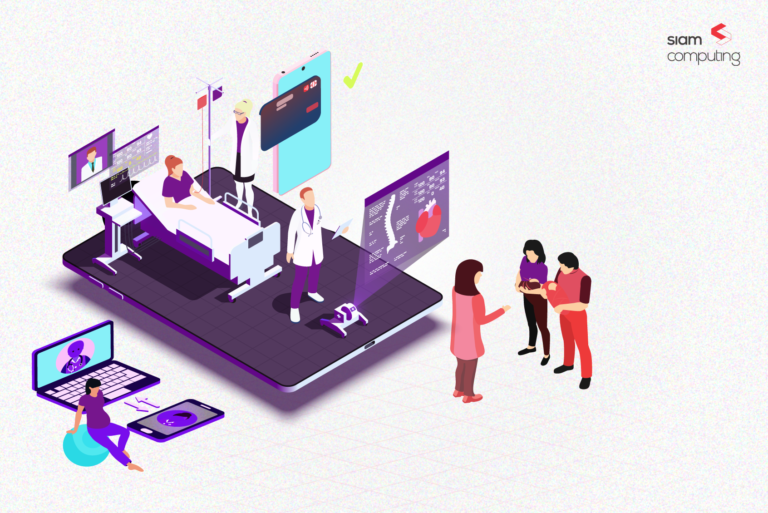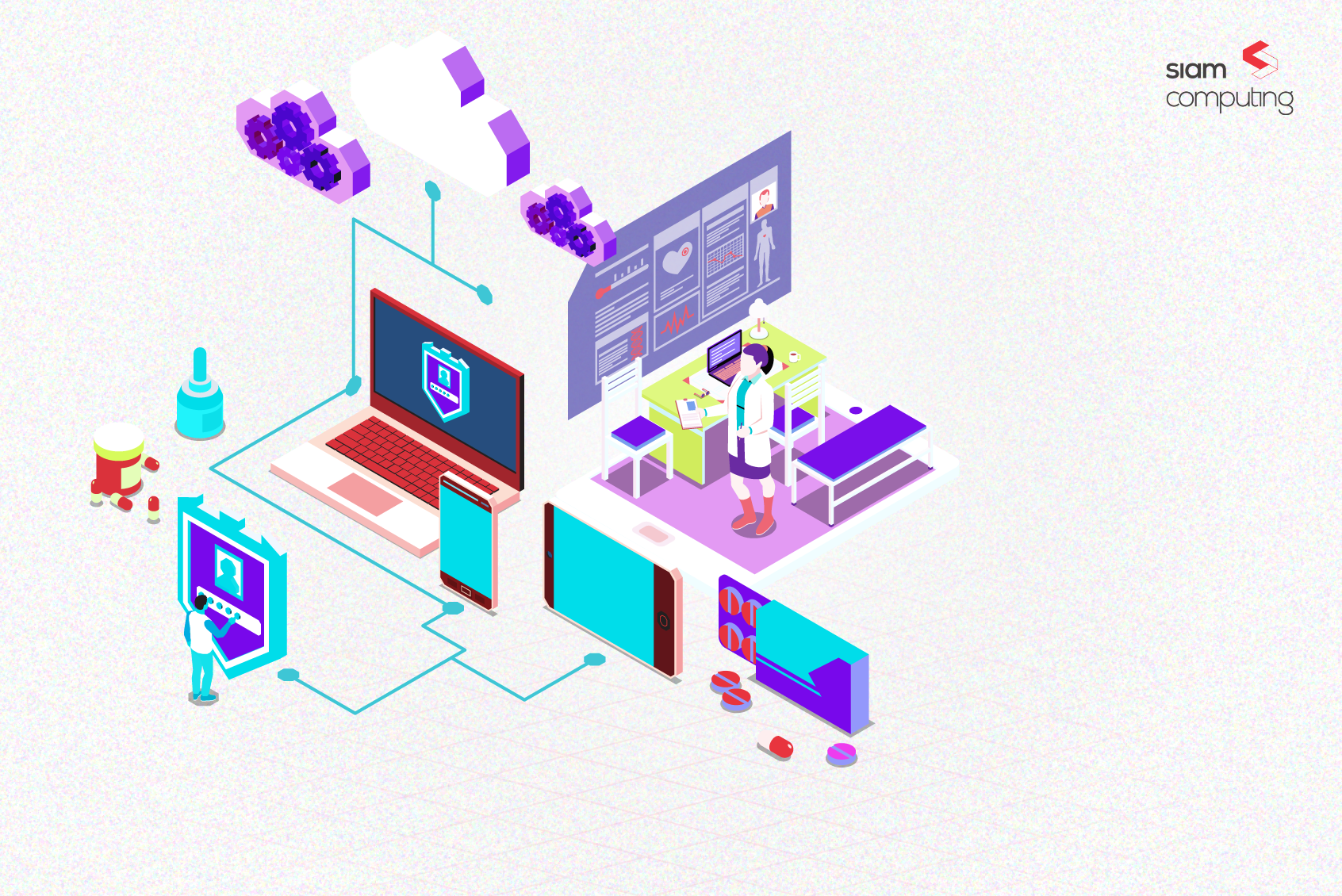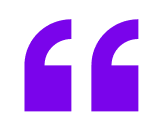India’s healthcare system faces a unique set of challenges, from overburdened hospitals and disproportionate patient-doctor ratio to limited access to quality care. In a country with a population of over 1.3 billion, the demand for healthcare services is immense, and addressing the healthcare needs of such a vast and diverse population is a formidable task.
However, the emergence of Large Language Models (LLMs) and chatbots offers a glimmer of hope, promising to revolutionize healthcare delivery in India.
Understanding LLMs in the Healthcare Context
Before we explore the specifics of how LLM chatbots are transforming Indian healthcare, it’s crucial to comprehend what LLMs are and how they function in the healthcare context.
Large Language Models (LLMs) are advanced AI systems designed to understand and generate human-like text in response to user queries. A prominent example is OpenAI’s ‘Chat Generative Pre-trained Transformer (ChatGPT),’ a 175-billion-parameter autoregressive language model. LLMs process text input into individual tokens, such as words, subwords, or characters, to analyze and understand semantic meaning and contextual information. These models are trained on a vast amount of data, including healthcare-specific information.
In healthcare, LLMs are trained on medical data such as electronic health records (EHR), diagnostic reports, and medical documentation. This training equips LLMs with the knowledge to respond contextually to medical queries, providing valuable insights and clinical decision support.
Now that we understand LLMs in the context of healthcare, let’s take a look at the challenges in the healthcare sector in India and how LLM chatbots can solve these challenges.
Challenges in Indian Healthcare
From the Patient’s Perspective:
1. Accessibility: India’s healthcare infrastructure is characterized by disparities in access to quality healthcare services. While urban areas may have relatively better access, rural and remote regions face significant healthcare deserts. This lack of accessibility is further exacerbated by the inadequate availability of healthcare facilities and specialists, especially in rural and underserved areas. As a result, patients often have to travel long distances, sometimes even across state borders, to access essential healthcare services.
2. Information Gap: In a country as vast and diverse as India, there is a significant information gap when it comes to healthcare. Patients, especially those in rural and remote areas, often lack access to accurate healthcare information. Misinformation and lack of awareness about preventive measures, health conditions, and available treatments contribute to delayed or inadequate healthcare-seeking behavior.
3. Patient Engagement: Engaging patients actively in their healthcare journey is a challenge in India. Many patients have limited health literacy and may not fully understand their medical conditions or the importance of treatment adherence. This lack of engagement can lead to poor compliance with treatment plans and follow-up care, ultimately impacting health outcomes.
From the Healthcare Provider’s Perspective:
1. Overburdened Healthcare System: The sheer volume of patients seeking healthcare in India can be overwhelming for healthcare professionals. The doctor-to-patient ratio in India is significantly lower than global standards, and physicians often find themselves handling an exorbitant number of cases daily. This heavy workload can lead to burnout, reduced quality of care, and long waiting times for patients.
2. Data Management: Managing vast amounts of patient data is a formidable task for healthcare professionals. In a country with a large and diverse population, maintaining accurate patient records, tracking medical histories, and ensuring data security is a complex undertaking. The lack of integrated electronic health records systems further compounds this challenge.
3. Language Diversity: India’s linguistic diversity is one of its defining characteristics. The country boasts a multitude of languages and dialects, making language a significant barrier in healthcare interactions. Doctors and healthcare professionals often face challenges in communicating with patients in their preferred languages, leading to misunderstandings and miscommunication.
Revolutionizing Indian Healthcare with LLM Chatbots
1. Enhancing Accessibility
Telemedicine Reach: LLM chatbots can act as virtual health assistants, extending the reach of healthcare services to remote and underserved areas. Patients can access preliminary consultations and health advice without travelling long distances.
Multilingual Support: By understanding and generating text in multiple languages, LLMs bridge the language gap, ensuring effective communication between healthcare providers and patients, regardless of linguistic diversity.
2. Bridging the Information Gap
Health Education: LLM chatbots can disseminate accurate health information, addressing the information gap. Tailored content can be delivered to patients, educating them about preventive measures, common health conditions, and available treatments.
Myth-Busting: Combatting misinformation is crucial. LLMs, well-versed in medical data, can debunk common myths and provide evidence-based information, fostering a better-informed patient population.
3. Improving Patient-Doctor Engagement
Personalized Health Insights: LLMs can analyze patient data and provide personalized health insights, empowering patients to participate in their healthcare journey actively. This tailored approach enhances patient understanding and encourages adherence to treatment plans.
Interactive Conversations: Chatbots can engage patients in interactive and understandable conversations, ensuring that even those with limited health literacy comprehend crucial information about their health.
4. Alleviating the Burden on Healthcare Professionals
Clinical Decision Support: LLM chatbots assist healthcare professionals by providing real-time clinical decision support. This aids in diagnostics and treatment planning, reducing the burden on doctors and improving the efficiency of healthcare delivery.
Automated Administrative Tasks: Routine administrative tasks, such as appointment scheduling and prescription renewals, can be handled by chatbots, allowing healthcare professionals to focus on patient care.
5. Efficient Data Management
Integrated Health Records: LLMs contribute to the development of integrated electronic health records systems. By efficiently organizing and managing patient data, these chatbots enhance the accuracy and accessibility of medical information.
Data Security Measures: Implementing robust security measures, LLMs ensure the confidentiality and integrity of patient’s personal data, addressing concerns related to data management in a diverse and vast healthcare landscape.
6. Navigating Language Diversity
Language-Adaptive Conversations: LLMs are designed to adapt to various languages and dialects. They facilitate seamless communication between healthcare providers and patients, breaking down language barriers and fostering clear, effective interactions.
Cultural Sensitivity: Understanding cultural nuances, LLM chatbots contribute to culturally sensitive healthcare delivery, ensuring that communication aligns with the diverse cultural backgrounds of patients.
Implementing LLM Chatbots: A Strategic Roadmap
1. Integration with Existing Systems
Ensure that LLM chatbots seamlessly integrate with existing healthcare systems. This facilitates a smooth transition and collaboration with traditional healthcare practices. Prioritize interoperability to allow LLMs to communicate with different healthcare platforms, making data exchange more efficient and comprehensive.
2. Continuous Learning and Adaptation
Implement mechanisms for real-time updates to keep LLMs abreast of the latest medical advancements, ensuring they provide accurate and up-to-date information. Also, establish a feedback loop to capture user experiences and continuously improve the chatbot’s performance, making it more attuned to the specific needs of the Indian healthcare landscape.
3. Ethical and Legal Considerations
Emphasize robust data privacy measures to reassure patients about the confidentiality of their health information. Comply with existing regulations and standards to build trust in using LLMs. By implementing clear and comprehensive consent processes, you can ensure that patients understand the role of LLMs in their healthcare journey and have the option to opt out if they choose.
4. Scalability and Resource Planning
Design the implementation to be scalable, considering the potential growth in user interactions. Anticipate increasing demand and plan for scalable infrastructure to handle the expanding user base. Allocate resources effectively, considering the computational power, storage, and personnel required for the successful deployment and maintenance of LLM chatbots.
5. Training Healthcare Professionals
Develop training programs for healthcare professionals to effectively utilize LLM chatbots as part of their practice. This includes understanding how to interpret chatbot-generated insights and integrate them into patient care. Acknowledge and address any skepticism or concerns among healthcare professionals regarding the integration of AI, emphasizing that LLM chatbots are tools designed to enhance, not replace, human expertise.
Make Your Healthcare Organization LLM-Ready
In the landscape of Indian healthcare, envision a future where:
Healthcare Deserts Shrink: Remote areas witness improved healthcare access through virtual consultations and AI-driven diagnostics.
Data Drives Healthcare Decision-Making: Healthcare providers leverage LLM-generated insights for data-driven decision-making, enhancing overall patient care quality.
Patients are empowered: Informed by LLMs, patients actively manage their health, leading to better health outcomes and preventive care practices.
Healthcare is collaborative: LLMs serve as collaborative partners for healthcare professionals, streamlining administrative tasks and augmenting diagnostic capabilities.
As the transformative power of LLM chatbots takes centre stage in India, the healthcare landscape stands on the brink of a paradigm shift. By strategically addressing challenges, implementing ethical practices, and fostering collaboration, LLM chatbots can revolutionize healthcare delivery, making quality healthcare accessible and improving patient outcomes.
Embarking on this journey requires a collective commitment to innovation, ethics, and inclusivity, ultimately shaping a healthier and more connected India.
Ready to Elevate Your Healthcare Services? Explore how our avant-garde product development services seamlessly integrate LLM chatbots into your organization. Contact us to discuss customizing our services to meet the unique needs of your healthcare facility. Your pathway to an LLM-ready healthcare organization begins with Siam Computing.







